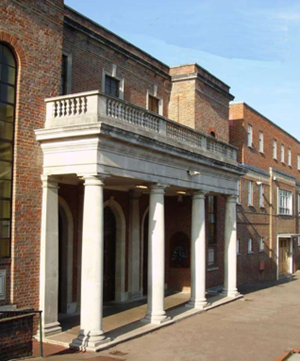 Below you will read an outline history of the growth of the synagogue and its community.
Below you will read an outline history of the growth of the synagogue and its community.
To study these in more depth do please refer to the various headed sections.
The origins of the community
By the early 1930s the number of Jewish residents in the Suburb started to rise significantly, especially in the still being developed eastern part. This created a need for a spiritual and indeed communal Centre. It was met initially in 1932 by provision of a space by the Institute at Central Square to allow small size Sabbath services to take place there.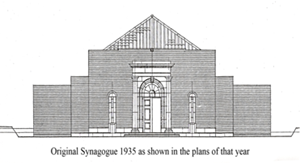
It soon became obvious that a purpose built Synagogue was required. With still much land undeveloped in the eastern section of the Suburb the fledgling Jewish community looked for it there.
Initially they asked Co partnership tenants for the lease of land between Church Mount and Winnington Road. This was refused on the grounds that it had been designated for a Church and to place a synagogue there was deemed inappropriate. Ultimately a lease was granted in 1934 at the northern end of Norrice Lea backing on the Lyttleton Playing Fields.
The still small community succeeded the to gain the support of the United Synagogue and was so enabled to build a small synagogue and appoint a spiritual leader.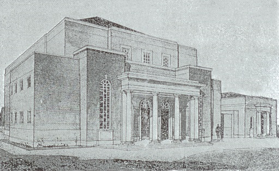
The synagogue opened in 1935 with some 70 families being members and the following year appointed  Reverend Isaac Levy as its first full time minister.
Reverend Isaac Levy as its first full time minister.
A rapid growth in the local Jewish community, up to some 250 families by the end of 1938 meant that the initial building was far too small and the enlarged synagogue was opened just after the War broke out, in late 1939.
The war years
By then 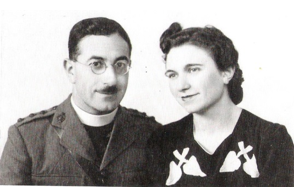 Rev Bornstein was appointed to lead the community . Shortly afterwards he joined the army as a chaplain. He was posted to North Africa and unfortunately died tragically there. His wife Miriam remained within community and took on a major role in developing its both religious and secular educational programs.
Rev Bornstein was appointed to lead the community . Shortly afterwards he joined the army as a chaplain. He was posted to North Africa and unfortunately died tragically there. His wife Miriam remained within community and took on a major role in developing its both religious and secular educational programs.
Throughout the war years the synagogue grew both in membership numbers and activities. It became an essential social Centre . The Suburb itself was not spared the effects of air raids and the original Synagogue now its hall area was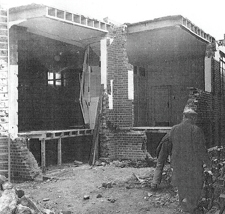 struck by a bomb.
struck by a bomb.
The spiritual leadership now the hands of Rabbi Dr Weinstock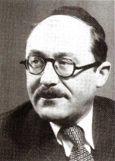 gave renewed impetus to the growth of the community. Among other things is played a major role as did the neighbouring reform Jewish synagogue Alyth, in securing the well being of the Kinder Transport children .
gave renewed impetus to the growth of the community. Among other things is played a major role as did the neighbouring reform Jewish synagogue Alyth, in securing the well being of the Kinder Transport children .
The Post War period
With the end of the War came the return of many of the younger members from the armed forces and this stimulated further growth. In 1947 Rabbi Weinstock stood down and 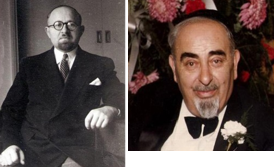 Rabbi Dr Lew together with Cantor Myer Freilich took over the spiritual leadership.
Rabbi Dr Lew together with Cantor Myer Freilich took over the spiritual leadership.
The succeeding decade saw further major changes. A primary school, Kerem, was established within the then buildings. Youth and adult social and education programmes developed further; as did religious education and activites.
This led to a need for further expansion. In 1958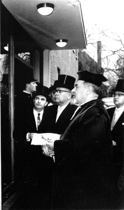 the hall area was rebuilt and more than doubled in size. It was opened and consecrated by the Chief Rabbi Dr Israel Brodie and with one further less substantial extension in 2002 the synagogue was then as it is today.
the hall area was rebuilt and more than doubled in size. It was opened and consecrated by the Chief Rabbi Dr Israel Brodie and with one further less substantial extension in 2002 the synagogue was then as it is today.